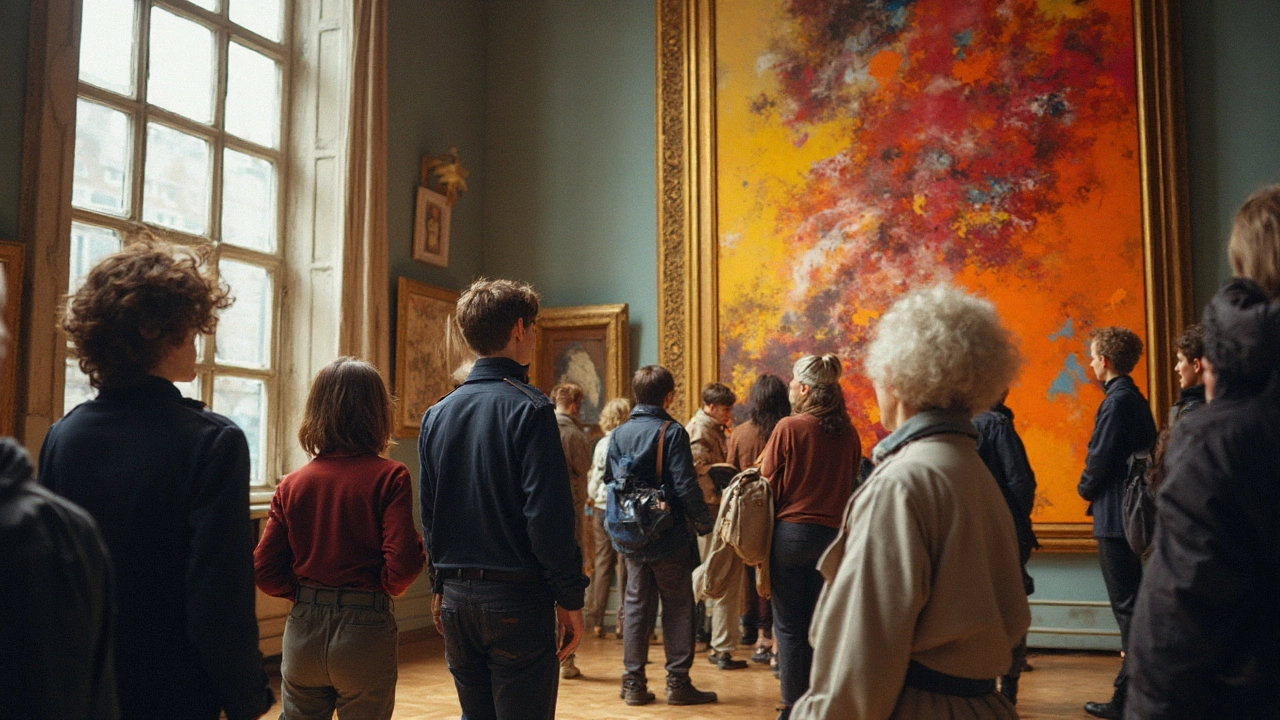What Does Abstract Art Really Mean? Understanding Its Powerful Message
4 Aug 2025Get real about abstract art: why artists make it, what it says, how to read it, and why it sticks with us. No overthinking, just sense and feeling.
Continue reading...Ever stare at a splashy painting and wonder if there's a story behind the chaos? You're not alone. Most people think abstract art is just random marks, but artists often hide real ideas in colour, shape, and texture. The trick is learning the visual shortcuts they use.
First off, colour is a big clue. Warm reds and oranges usually push feelings of energy or anger, while cool blues and greens calm the eye. If you see a sudden burst of yellow next to dark black, the artist might be showing hope breaking through gloom. Look for these emotional pairings and ask yourself what mood the combo creates for you.
Even without clear pictures, shapes can act like words. Repeated circles can hint at cycles, unity, or even the idea of wholeness. Sharp triangles often feel aggressive or point toward a direction. When an artist repeats a certain form, they're stressing that idea. Spotting a grid or repeated line pattern might tell you the work is about order, structure, or confinement.
Another shortcut is texture. Thick, rough brushstrokes add tension, while smooth, glazed surfaces feel settled. Artists sometimes layer thin washes to suggest memory or hidden depth. When you see a gritty surface, think about struggle; a sleek layer might signal clarity or resolution.
Knowing a bit about the creator can boost your reading speed. If the painter grew up during a war, a chaotic composition could be a reaction to chaos they lived through. If they’re known for environmental work, earthy tones might be a call for nature preservation. A quick bio check adds a shortcut to your interpretation.
Don’t forget the title. Even a vague name like “Untitled” can be a hint—sometimes the artist wants you to bring your own story. Other times, a title like “Migration” directly points to movement, travel, or change, so match that with what you see.
Finally, trust your gut. Abstract art invites personal reaction. If a piece makes you think of childhood, a specific place, or a fleeting feeling, that’s part of the message. The artist gave you a visual prompt; you finish the story with your experience.
So next time you stand in front of a bold abstract, start with colour, then move to shape, texture, and context. Ask simple questions: What feeling does this colour spark? What does this shape remind me of? How does the surface feel? With practice, the hidden messages become easier to read, and you’ll get more out of every splash on the canvas.

Get real about abstract art: why artists make it, what it says, how to read it, and why it sticks with us. No overthinking, just sense and feeling.
Continue reading...